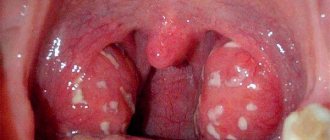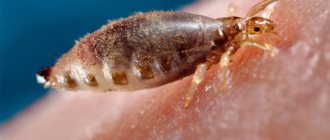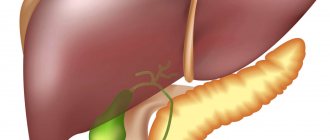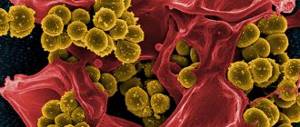General information
Pituitary dwarfism (another commonly used name is dwarfism , as well as microsomia , nanosomia ) is a condition in which there is a serious delay in human growth and physical development. This occurs due to a lack of somatotropic hormone (growth hormone, growth hormone) in the body.
This disease is considered to be very rare. According to various data, the disease affects 1-4 people per 10,000 population. Doctors note that male patients suffer from dwarfism approximately twice as often as women. It is generally accepted that dwarfism in men is a height lower than 130 cm. In women this figure is 120 cm.
Symptoms
The main symptom of dwarfism is abnormally low growth, which lags behind the average by at least 25%.
However, there are other characteristic signs of this pathology, which affect both the appearance and the functioning of internal organs.
Let's list them:
- the skin of children suffering from dwarfism is very thin and tender, and in adults it is dry and wrinkled, with a characteristic yellowish tint;
- too high a voice timbre due to the children's larynx structure;
- very poor development of the subcutaneous fat layer;
- too sparse hair in both men and women;
- poor muscle development caused by insufficient anabolic effect;
- short bones with a very thin cortex;
- slowing down the process of skeletal ossification;
- thinning of the bones of the skull and the appearance of a more pronounced vascular pattern on it;
- minimum sizes of the lungs, heart and digestive organs;
- disturbances in the normal functioning of the cardiovascular system - namely, problems with myocardial trophism, systolic murmurs above the heart, too weak a heartbeat in the upper part, severe oxygen deficiency, as well as a significant decrease in pulse, diastolic and systolic pressure;
- poor development of the organs of the reproductive system (in men there is atrophy of the ovaries, which do not descend into the scrotum, and in women there is an absolute absence of menstruation);
- male and female infertility (although there are rare exceptions);
- infantile signs of the psyche;
- frequent occurrence of stress and depression.
Genetic delay in growth and development is called pituitary dwarfism. An adult is considered a dwarf if his height is below 120-130 cm.
You can read about the causes of pituitary adenoma here.
Do you know what the pituitary gland is responsible for? If interested, read this article.
Causes
The word “nanism” comes from the Greek language and means “dwarf”. This clinical syndrome manifests itself in humans as a consequence of disorders of an endocrine and non-endocrine nature. In the body of patients suffering from dwarfism, there is a disturbance in the production of somatotropin (the so-called growth hormone) by the anterior lobe of the pituitary gland.
The cause of the manifestation of this disease in humans can be damage to the pituitary gland due to injuries, tumors, the influence of toxins and infection on the interstitial pituitary region. Sometimes the normal regulation of the functions of the pituitary gland by the hypothalamus .
The development of the disease is also influenced by genetic factors, loss or decrease in the somatotropic function of the pituitary gland, lack of biological activity of growth hormone, or impaired sensitivity to this hormone on the part of peripheral tissues.
Pituitary dwarfism is usually classified as a disease that is inherited genetically. In this case, it is important for a person to know whether there were cases of the disease in his close relatives and ancestors. Sometimes even old photos or asking relatives can help recognize the disease in loved ones.
But doctors also identify a number of factors that can aggravate the situation when a person develops dwarfism. Thus, pituitary dwarfism in children is often aggravated due to poor nutrition, the influence of negative environmental factors, and the presence of certain somatic diseases. Treatment of pituitary dwarfism involves eliminating such factors.
The cause of the development of dwarfism can be a birth injury to the head, as well as syphilis , tuberculosis , and sarcoidosis .
Radiation therapy or chemotherapy is sometimes a predisposing factor to dwarfism. However, in approximately half of the cases the cause of the development of this pathology cannot be found out.
Treatment
Replacement therapy with somatotropin drugs is the basis for the treatment of pituitary dwarfism.
All patients with pituitary dwarfism require growth hormone replacement therapy. For this purpose, recombinant somatotropin preparations that have undergone clinical testing are used.
The basis for starting such treatment is clinically and laboratory confirmed deficiency of somatropin. The duration of therapy is determined individually. It is canceled after the growth zones are closed or sufficient body length is achieved.
It should be noted that growth hormone preparations cannot be used in all patients. Its administration is contraindicated:
- in the presence of a tumor process in the body;
- closed growth zones;
- diabetes mellitus
The results of growth hormone therapy depend on many factors:
- age;
- drug dose;
- mode of its administration;
- general condition of the patient.
Its effectiveness is more noticeable in young children with a large deficiency of growth hormone and a pronounced delay in bone maturation. The highest growth rate is observed in the first year after the start of treatment, it can reach 8-13 cm. In subsequent years it slows down and is about 5-6 cm per year.
During treatment, not only an increase in growth is noted, but also changes in the somatic status of patients:
- muscle strength increases;
- cardiac output improves;
- bone mineralization is normalized;
- vitality increases.
Children with hypopituitarism require additional treatment with sex hormones, glucocorticoids and L-thyroxine.
Signs
So, the main sign of the disease is considered to be low human stature - below 130 cm in men and below 120 cm in women. So, if a child normally grows by 7-8 cm per year, then with pituitary dwarfism the child’s growth increases by only 3-4 cm per year. It should be noted that doctors consider short stature to be constitutional, that is, of a family nature, as well as stunting in healthy children as a variant of the norm.
Dwarfism is a condition in which there is a very sharp lag in the growth and physical development of the body in comparison with the average norms for a certain age. Signs of dwarfism suggest not only a pronounced lag, but also a decrease in the annual dynamics of increase in height and weight in such a patient. As a rule, such children have completely normal indicators of both weight and height at birth. But later they show a significant lag behind their peers in these indicators. Sometimes the disease manifests itself from the very first months of life. But still, most often, parents notice symptoms of dwarfism in children at 2-4 years of age.
Patients who suffer from dwarfism have a proportional body shape and build. But at the same time, such proportions are more consistent with a child’s physique. Such people have dry and pale skin. The reasons for this phenomenon are insufficient functioning of the parathyroid glands. If a person does not receive regular and correct treatment, then the skin ages very early and wrinkles appear on it.
The fatty tissue under the skin is also poorly developed, and some patients have excess fat deposits on the abdomen, hips, and chest. At the same time, the muscles are very poorly developed. If in patients who develop gigantism , the muscles are initially strong and later weaken, then in patients with dwarfism, muscle weakness is noted immediately. Most often, such people do not experience secondary hair growth. Another important symptom that pituitary dwarfism manifests is delayed skeletal ossification. This phenomenon determines the late replacement of milk teeth with permanent ones.
Due to the loss of gonadotropic function of the pituitary gland, people with dwarfism experience insufficiency of sexual development. If we compare with age norms, then in men the penis and gonads are reduced, the scrotum is underdeveloped, and there are no secondary sexual characteristics. At the same time, women with pituitary dwarfism experience pronounced manifestations of hypogonadism. They may not have menstruation, the mammary glands remain underdeveloped, and secondary sexual characteristics do not appear.
Mental development in such patients meets normal criteria, but sometimes some juvenile features may appear. During a neurological examination, it is possible to detect some signs indicating organic damage to the nervous system. The internal organs of such patients are reduced (this phenomenon is called splanchnomicria ), they often suffer from manifestations of hypotension , bradycardia , and muffled heart sounds are noted. Sometimes phenomena of secondary hypocortisolism .
If nanism has developed in a patient as a result of organic brain damage, then general cerebral symptoms are present and intelligence decreases. Diabetes insipidus often develops with this condition .
Clinical picture
Characteristic manifestations of dwarfism of pituitary origin are:
- a sharp lag of the child in growth rates against the background of the proportional structure of the body;
- delay in the rate of bone tissue maturation;
- underdevelopment of the facial part of the skull (small facial features with recessed bridge of the nose);
- hair thinning;
- high timbre of voice;
- excess body weight (may be absent in children with early onset of the disease);
- delayed puberty (secondary sexual characteristics appear in a child when his bone age reaches puberty).
In hypopituitarism, the signs of the disease are accompanied by symptoms of loss of other tropic functions of the pituitary gland.
- Often these children have secondary hypothyroidism. However, it is not always detected clinically; in some cases, this pathology is detected only after provocative tests or blood tests for the level of thyrotropin and thyroid hormones.
- Most patients with growth hormone deficiency have gonadotropin deficiency.
If a child, in addition to growth retardation, has complaints of headache and decreased vision, then organic intracranial pathology (tumor) should be excluded.
Diagnostics
Parents may have suspicions about dwarfism in a child already in the first months or years of the child’s life. When determining developmental features, the pediatrician evaluates not only the child’s height and weight, but also their dynamics.
If pituitary dwarfism is suspected, an x-ray examination is prescribed. X-rays of the hands and wrists show signs of delayed skeletal differentiation and ossification.
Computed tomography allows one to identify underdeveloped zones of skeletal ossification. During normal development of the body, bones are formed from cartilage, their ossification occurs gradually. Such processes begin from ossification points. They are completely completed when a person turns 20-25 years old. If the production of somatotropin is impaired, then during the study such points can be determined throughout a person’s life.
The patient is prescribed laboratory tests. In particular, an insulin test , in which there is no increased secretion of growth hormone (this is typical for the normal state of human health). Sometimes its secretion increases only for a short period and only slightly. Other tests are also used to detect the level of growth hormone in the blood. For this purpose, biologically active substances and some medications are used.
Treatment of pituitary dwarfism in children
Treatment methods and their effectiveness usually depend on the cause of dwarfism. In most cases, it is impossible to have any effect on the growth and development of the child.
Comparison of a patient with dwarfism with a healthy person
Important! If the primary source of dwarfism is hidden in the pituitary gland's low production of the required growth hormones, the doctor may prescribe hormonal replacement treatment, which will help slow down the development of the disease. Thanks to this, an adult who has undergone treatment on time can have normal height.
The main drug in hormonal therapy is somatotropin, the use of which is especially effective at the age of 13–14 years. To accelerate the growth and development of skeleton and muscle tissue, children under 18 years of age may be prescribed anabolic steroids.
During the period of sexual maturation, adolescents may be prescribed the introduction of sex hormones - estrogen and gonadotropin. Depending on the characteristics of the disease, additional drugs can be used to eliminate circulatory pathologies; restorative treatment; thyroid hormones.
If a pituitary tumor is detected, surgical removal or a course of radiation therapy is used.
If signs of pathology are detected in time, the patient has every opportunity to achieve normal growth and live a full life.
Advice. If your child has been diagnosed with pituitary dwarfism, do not despair. Timely diagnosis and hormone replacement therapy will help ensure normal physical and intellectual development.
Girl with short stature
Prevention
There are no effective preventive measures to prevent dwarfism. However, the influence of harmful factors (poisons, toxins, etc.) should be avoided during pregnancy and subsequent breastfeeding . The development of the disease can be affected by injuries received during childbirth . The child should be provided with the most nutritious nutrition possible; the diet should contain foods high in vitamins and minerals. It is important to promptly treat all somatic diseases of the body.
Dwarfs nowadays
Until recently, 20-year-old He Pingping from Inner Mongolia was considered the shortest man in the world. His height was 75 cm, weight - 7 kg[2]. However, this fact was disputed by a native of Nepal named Hagendra Thapa Magar, whose height is 67.08 cm[3]. On March 15, 2010, He Pingping died unexpectedly after experiencing severe chest pain, which was most likely related to heart disease[4].
On October 14, 2010, Khagendra Thapa Magar became the Guinness Book of Records record holder and received the title of the smallest man in the world[5].
List of sources
- Dedov I.I. Pediatric endocrinology / Dedov I.I., Peterkova V.A. - M., 2006;
- Clinical endocrinology: manual / ed. N.T. Starkova. — [3rd ed., rev. and additional] - St. Petersburg. : Peter, 2002;
- Nikitina I.L. Pediatric endocrinology: Textbook / Nikitina I.L. - Rostov-on-Don: Phoenix, 2006;
- Stroev Yu.I. Endocrinology of adolescents / Stroev Yu.I. Churilov L.P. - St. Petersburg. : ELBI-SPb, 2004;
- Shabalov M. Diagnosis and treatment of endocrine diseases in children and adolescents / Shabalov - M.: Medpress, 2003.











